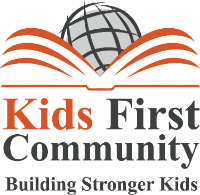What is Domestic Violence?
According to the National Coalition Against Domestic Violence, domestic violence is “the willful intimidation, physical assault, battery, sexual assault, and/or other abusive behavior as part of a systematic pattern of power and control perpetrated by one intimate partner against another.” If you or someone that you know has found themselves in a situation of domestic violence, there is a way out. Abuse can occur at any point in a relationship and can effect everyone in the household regardless of the abuser or who is being directly abused. No matter who you are, it is important to seek out help in order to stop the cycle of violence that is devastating to all of those involved. It is especially important to seek out help when there are children living in the house due to the long-lasting effects that domestic violence can cause in their lives. Read our post on those effects here.
Examples of Domestic Violence
The first step to getting help is recognizing the problem. There are many different ways in which domestic violence occurs in each household. Many individuals may not even admit they are in an abusive situation due to the manipulation by the abuser. Some examples of domestic abuse might include accusing the victim of cheating, making the victim feel guilty for spending time away with family or friends, stealing money or being controlling over the financial situation, verbally or physically threatening the victim, or many other examples found on the National Coalition Against Domestic Violence’s website. According to HelpGuide.org abusers use “fear, guilt, shame, and intimidation” to gain control over their victims and can do so in a variety of ways.
Domestic Violence and Children
Domestic violence can be exasperated in situations involving children. According to the Mayo Clinic, domestic violence can often begin or increase in severity during pregnancy. Domestic violence during pregnancy puts the mother and unborn child at risk and if it is not resolved, can often continue after the child is born. Fear of breaking up a family when a child is involved is understandable but safety is of top priority.
Helping a Friend or Family Member
If you suspect domestic violence within the home of a friend or family member, it is very important to assist the victims as best you can. Confronting someone you know regarding suspected domestic violence can be a very intimidating and touchy situation for both parties involved. Please see our article regarding escaping domestic violence to learn how to help.
The first step to moving on from domestic violence is knowing there is a problem. After recognizing the risk, escaping the abusive situation is the next priority.








